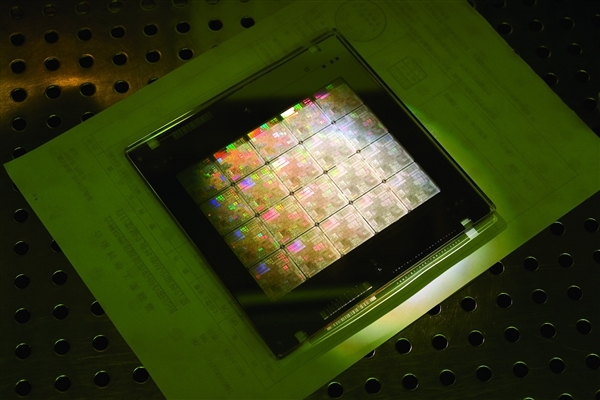 Technology peripherals
Technology peripherals
 It Industry
It Industry
 Technology transcends! Rapidus plans to achieve mass production on 2nm process
Technology transcends! Rapidus plans to achieve mass production on 2nm process
Technology transcends! Rapidus plans to achieve mass production on 2nm process
Rapidus plans to reinvigorate the industry after lagging behind the state of the art in wafer manufacturing technology for more than 20 years. Aiming to achieve mass production of the 2-nanometer EUV process as quickly as possible by 2025, the company was jointly established with eight industry leaders including Toyota, Sony, and Renesas.
From the editor’s understanding, it is undoubtedly very challenging to directly jump from the current 45-nanometer level to the 2-nanometer process. Rapidus is partnering with IBM in the United States to license 2-nanometer technology.

Rapidus plans to send 100 engineers to IBM to learn the GAA surround gate transistor technology required to implement the 2nm process, which is considered one of the key technologies one. Before April, Rapidus had sent a team of engineers to discuss cooperation with IBM.
Rapidus plans to build a wafer fab in Hokkaido to achieve this goal. Construction work is expected to begin in September 2023, with the plant infrastructure completed and the construction of clean rooms launched by June 2024. The company plans to start trial operation of the production line in April 2025 and introduce EUV lithography machines and other equipment. Rapidus aims to start large-scale mass production of the 2nm process in 2027, which is only 1-2 years behind the 2nm processes of TSMC, Samsung and Intel.

In addition to committing to mass production of the 2-nanometer process, Rapidus has also formulated a plan to achieve annual revenue of 1 trillion yen in the 2030s, equivalent to approximately 51 billion RMB or US$7.2 billion in size.
Rapidus’ plan to revive the wafer manufacturing industry has attracted much attention. If mass production of the 2-nanometer process is successfully achieved, it will significantly promote the progress of Japan's semiconductor industry and enhance its competitiveness in the global semiconductor market.
The above is the detailed content of Technology transcends! Rapidus plans to achieve mass production on 2nm process. For more information, please follow other related articles on the PHP Chinese website!

Hot AI Tools

Undresser.AI Undress
AI-powered app for creating realistic nude photos

AI Clothes Remover
Online AI tool for removing clothes from photos.

Undress AI Tool
Undress images for free

Clothoff.io
AI clothes remover

Video Face Swap
Swap faces in any video effortlessly with our completely free AI face swap tool!

Hot Article

Hot Tools

Notepad++7.3.1
Easy-to-use and free code editor

SublimeText3 Chinese version
Chinese version, very easy to use

Zend Studio 13.0.1
Powerful PHP integrated development environment

Dreamweaver CS6
Visual web development tools

SublimeText3 Mac version
God-level code editing software (SublimeText3)

Hot Topics
 1666
1666
 14
14
 1425
1425
 52
52
 1328
1328
 25
25
 1273
1273
 29
29
 1253
1253
 24
24
 CNCF Arm64 Pilot: Impact and Insights
Apr 15, 2025 am 08:27 AM
CNCF Arm64 Pilot: Impact and Insights
Apr 15, 2025 am 08:27 AM
This pilot program, a collaboration between the CNCF (Cloud Native Computing Foundation), Ampere Computing, Equinix Metal, and Actuated, streamlines arm64 CI/CD for CNCF GitHub projects. The initiative addresses security concerns and performance lim
 Serverless Image Processing Pipeline with AWS ECS and Lambda
Apr 18, 2025 am 08:28 AM
Serverless Image Processing Pipeline with AWS ECS and Lambda
Apr 18, 2025 am 08:28 AM
This tutorial guides you through building a serverless image processing pipeline using AWS services. We'll create a Next.js frontend deployed on an ECS Fargate cluster, interacting with an API Gateway, Lambda functions, S3 buckets, and DynamoDB. Th
 Top 21 Developer Newsletters to Subscribe To in 2025
Apr 24, 2025 am 08:28 AM
Top 21 Developer Newsletters to Subscribe To in 2025
Apr 24, 2025 am 08:28 AM
Stay informed about the latest tech trends with these top developer newsletters! This curated list offers something for everyone, from AI enthusiasts to seasoned backend and frontend developers. Choose your favorites and save time searching for rel
 Benefits of Custom Telecommunication Software
May 11, 2025 am 08:28 AM
Benefits of Custom Telecommunication Software
May 11, 2025 am 08:28 AM
Customized telecom software development is undoubtedly a considerable investment. However, in the long run, you may realize that such a project may be more cost-effective because it can increase your productivity like any ready-made solution on the market. Understand the most important advantages of building a customized telecommunications system. Get the exact features you need There are two potential problems with the off-the-shelf telecom software you can buy. Some lack useful features that can significantly improve your productivity. Sometimes you can enhance them with some external integration, but that isn't always enough to make them great. Other software has too many functions and is too complicated to use. You probably won't use some of these (never!). A large number of features usually adds to the price. Based on your needs
 CNCF Triggers a Platform Parity Breakthrough for Arm64 and x86
May 11, 2025 am 08:27 AM
CNCF Triggers a Platform Parity Breakthrough for Arm64 and x86
May 11, 2025 am 08:27 AM
CI/CD puzzles and solutions for open source software in Arm64 architecture Deploying open source software on Arm64 architecture requires a powerful CI/CD environment. However, there is a difference between the support levels of Arm64 and traditional x86 processor architectures, which are often at a disadvantage. Infrastructure components developers for multiple architectures have certain expectations for their work environment: Consistency: The tools and methods used across platforms are consistent, avoiding the need to change the development process due to the adoption of less popular platforms. Performance: The platform and support mechanism have good performance to ensure that deployment scenarios are not affected by insufficient speed when supporting multiple platforms. Test coverage: Efficiency, compliance and



